During the recent Pre-Conference Study Tour, our group visited Maori Leap Cave, which is on the East Coast of New Zealand's South Island, a few kilometres to the south of Kaikoura. It was the only show cave in New Zealand I had not seen, so I was particularly keen to visit it.
The name of the cave is the first thing of interest. Evidently, there used to be a Maori village on the top of the cliff above the cave a long time ago. Local legend has it that one day a war party travelled down from the North Island and attacked the village. All of the villagers were captured with the exception of one young male warrior who escaped by leaping off the cliff - hence the name Maori Leap Cave.
The cave was discovered in 1958 by limestone quarrymen via an upper entrance, and opened soon thereafter. The current tourist entrance was excavated later. The cave is privately owned by the local farmer, and it has been operated by a number of lessees over the years. The cave is right next State Highway 1, which from a commercial perspective is about as good as it gets.
Maori Leap is a phreatic sea cave formed about two million years ago. About 6000 years ago a rock fall buried the natural entrance to the cave.
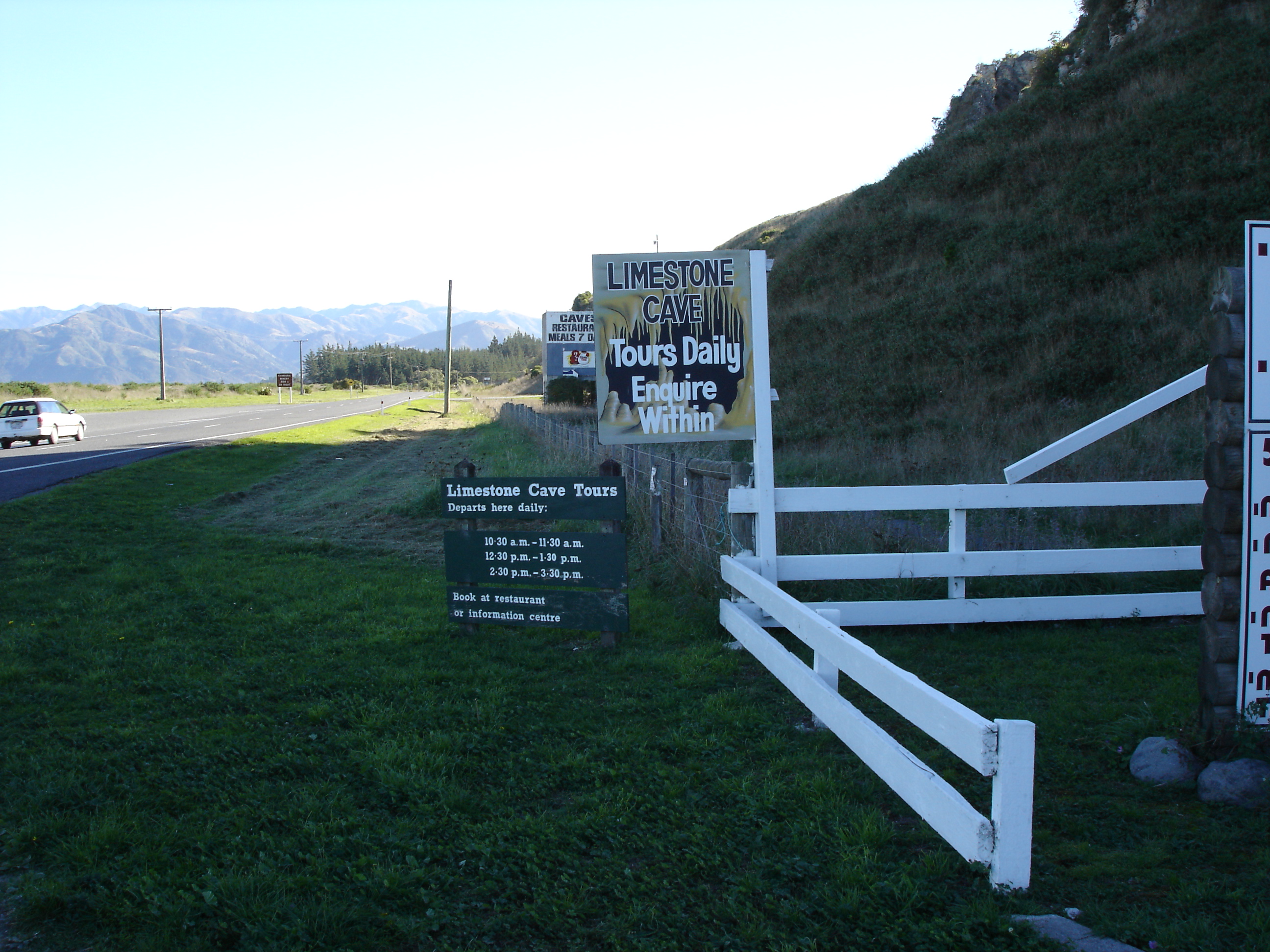 |
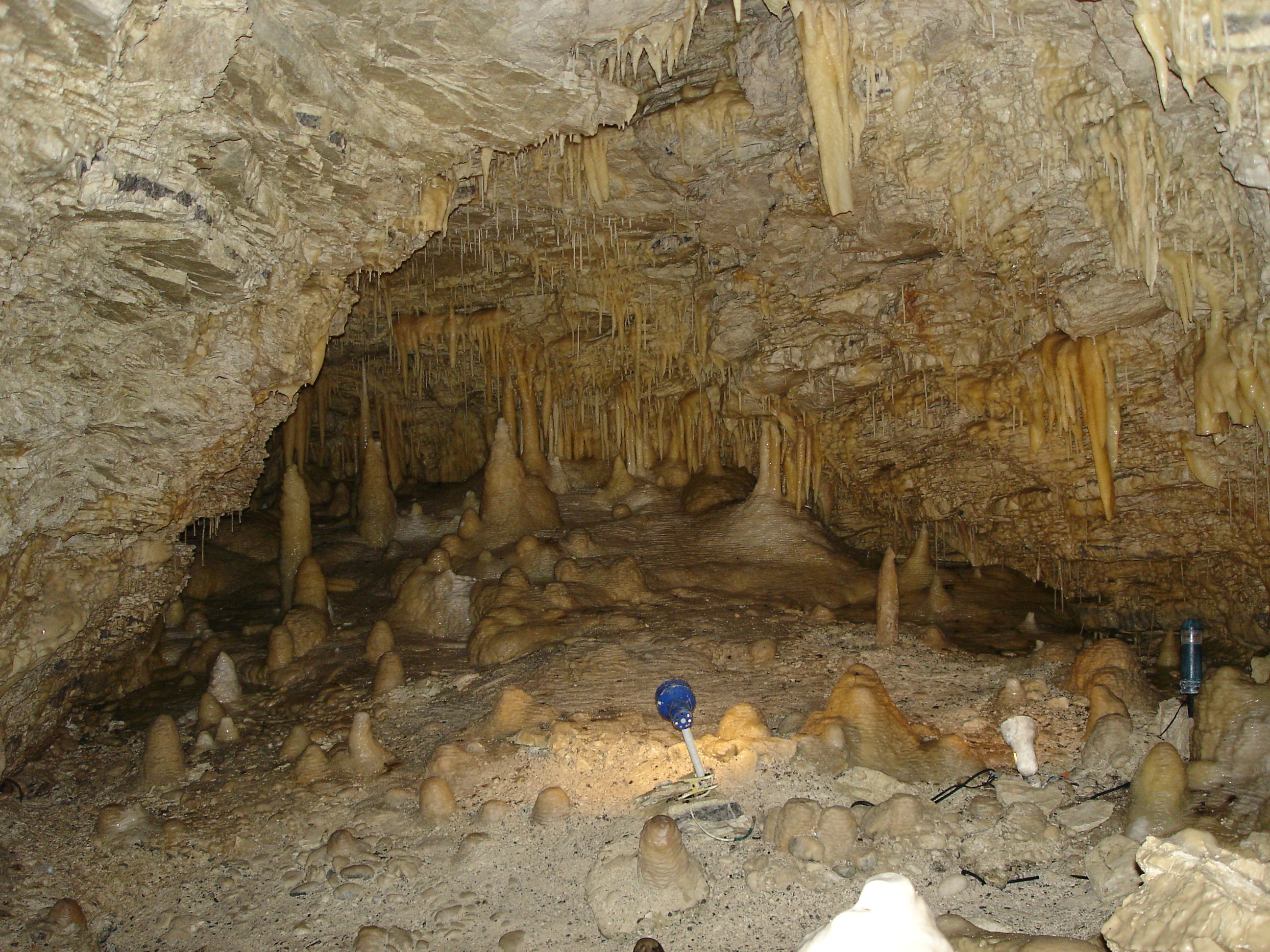 |
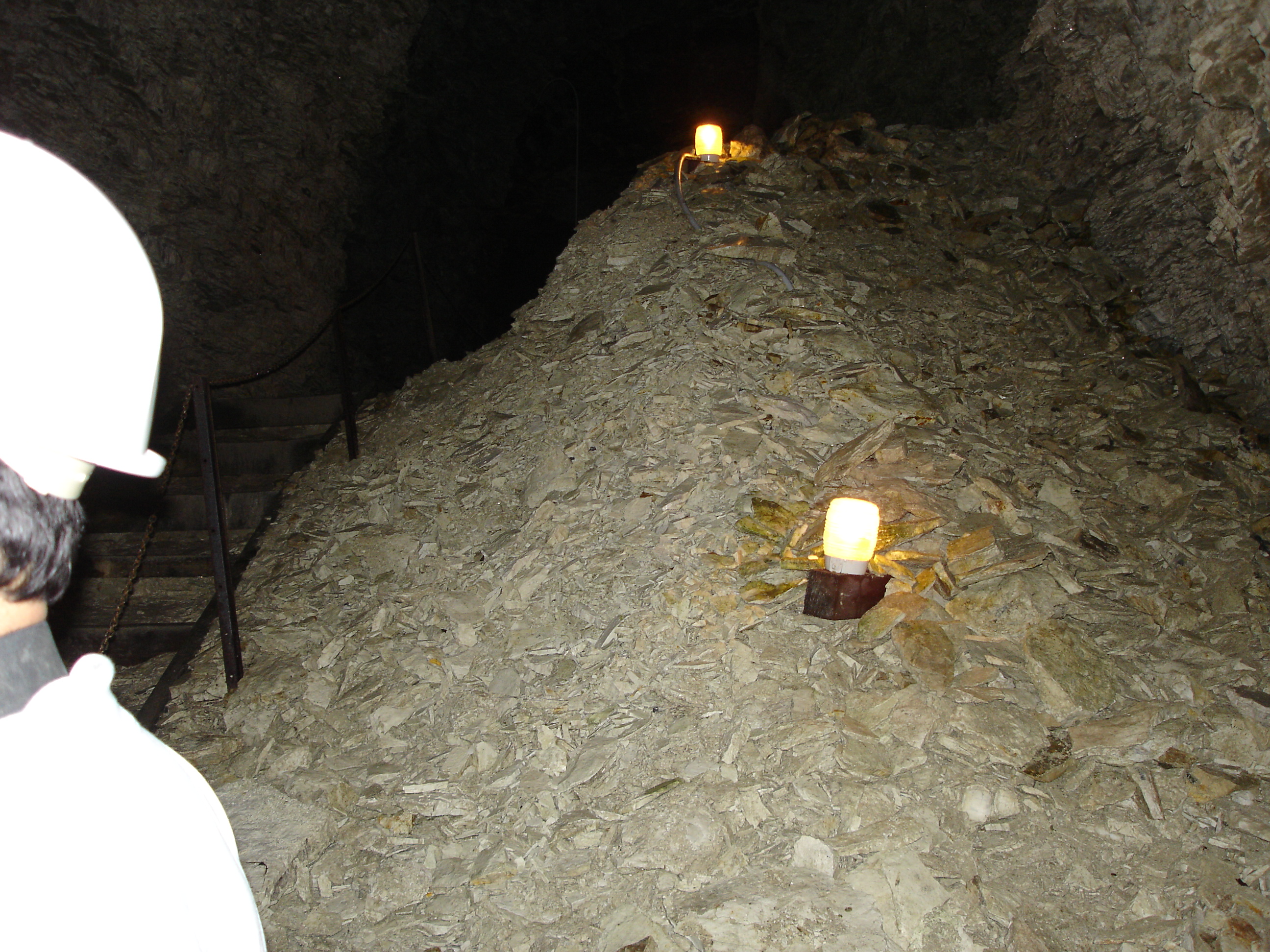 |
Signage at Maori Leap Cave |
Secondary Deposition in Maori Leap Cave |
Lighting - Maori Leap Cave |
This dating relies on the carbon dating of penguin fossils which presumably were roosting in the cave at the time of the entrance closure. As a result, perhaps, the secondary deposition in the cave is relatively young, less than 6,000 years old. Consequently, for the most part speleothems don't exhibit a great deal of size, although the rear of the cave, in particular, is quite well decorated.
The surface infrastructure consists of a restaurant/shop, but little in the way of cave interpretation. In fact, signage indicating a show cave was there was a little obscure, I thought.
Our group was warmly welcomed on arrival, and we were delighted to meet the cave operators, Marg and Scott Robertson.
Maori Leap has six scheduled tours per day, with a maximum of fifteen people per tour. We then went off with George, our guide, for the tour, which lasts about forty minutes, and is 'in and out' the same entrance.
We all had to wear hard hats, a not-uncommon requirement at some show cave locations in New Zealand. George thought the reason was the danger of rock fall in the cave - certainly it could not have been because anyone was danger of hitting their heads!
As for rock fall, well, I strongly suspect one is more likely to be injured on the roads, or bungee jumping, than in Maori Leap Cave. Better safe than sorry, I suppose ... I must say George was great value, and very friendly, although (not surprisingly) a bit overwhelmed by having ACKMA on his tour!
His tour did feature a fair measure of Queen Victorias, and Fairy Castles, and a bit more geology would have been good, but he can't be knocked for his enthusiasm!
After the tour I was given a copy of the Training Notes for Guides, which at three A4 pages struck me as rather slim.
They are OK, but could be improved, as can everything! A few of the 'facts' do need addressing though. For example the statement in the Notes that "The stalactites grow 2.5cm every hundred years" is a definite worry - mainly because it is not correct, of course.
The pathway through the cave is compacted, with a few hand rails in places, and some steps in the mud base as necessary. The cave is a very easy traverse. The lighting is 32V transformed down from 240V, and basically comprises conduit strung through the cave, with light bulbs at intervals.
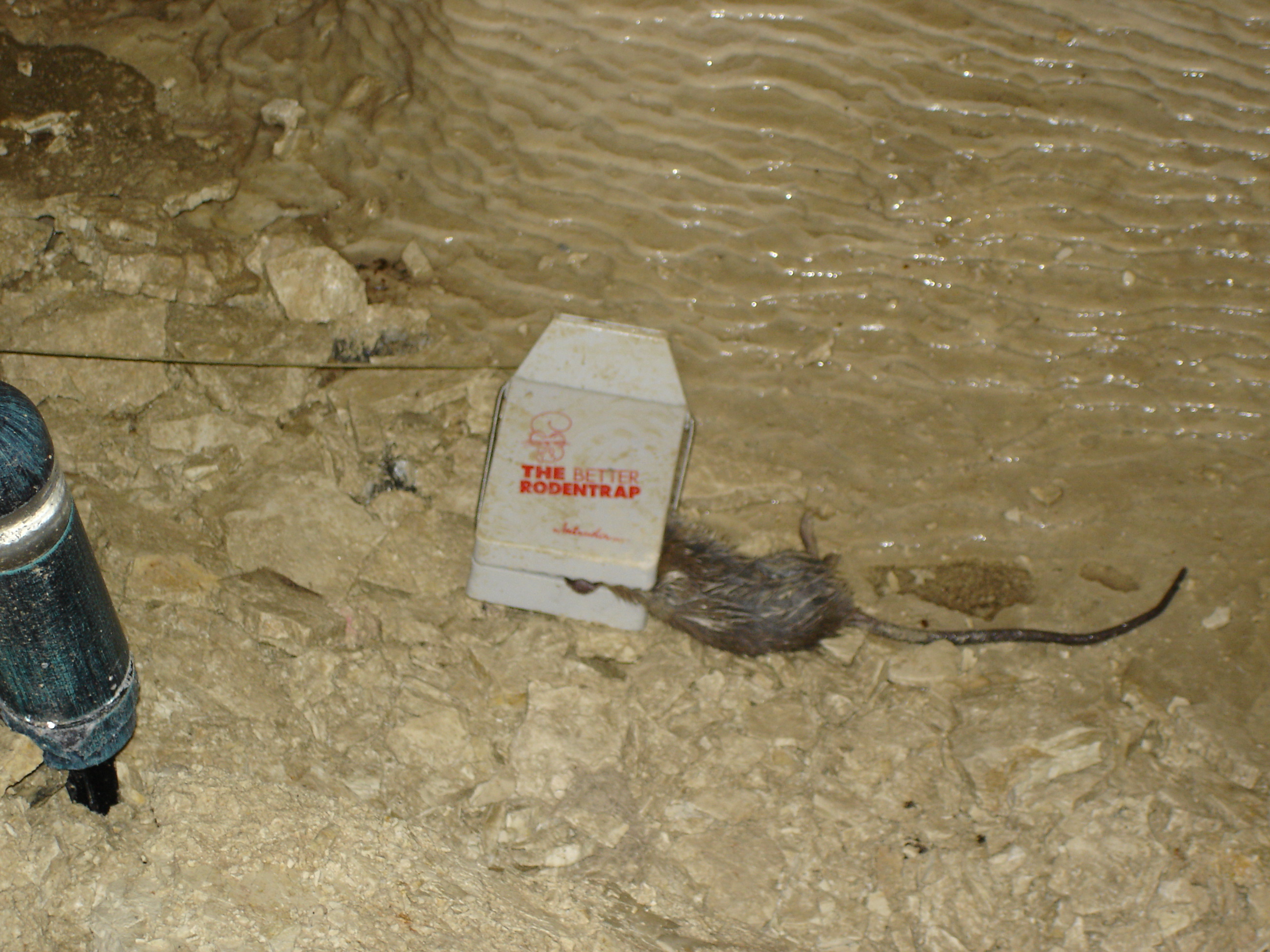 |
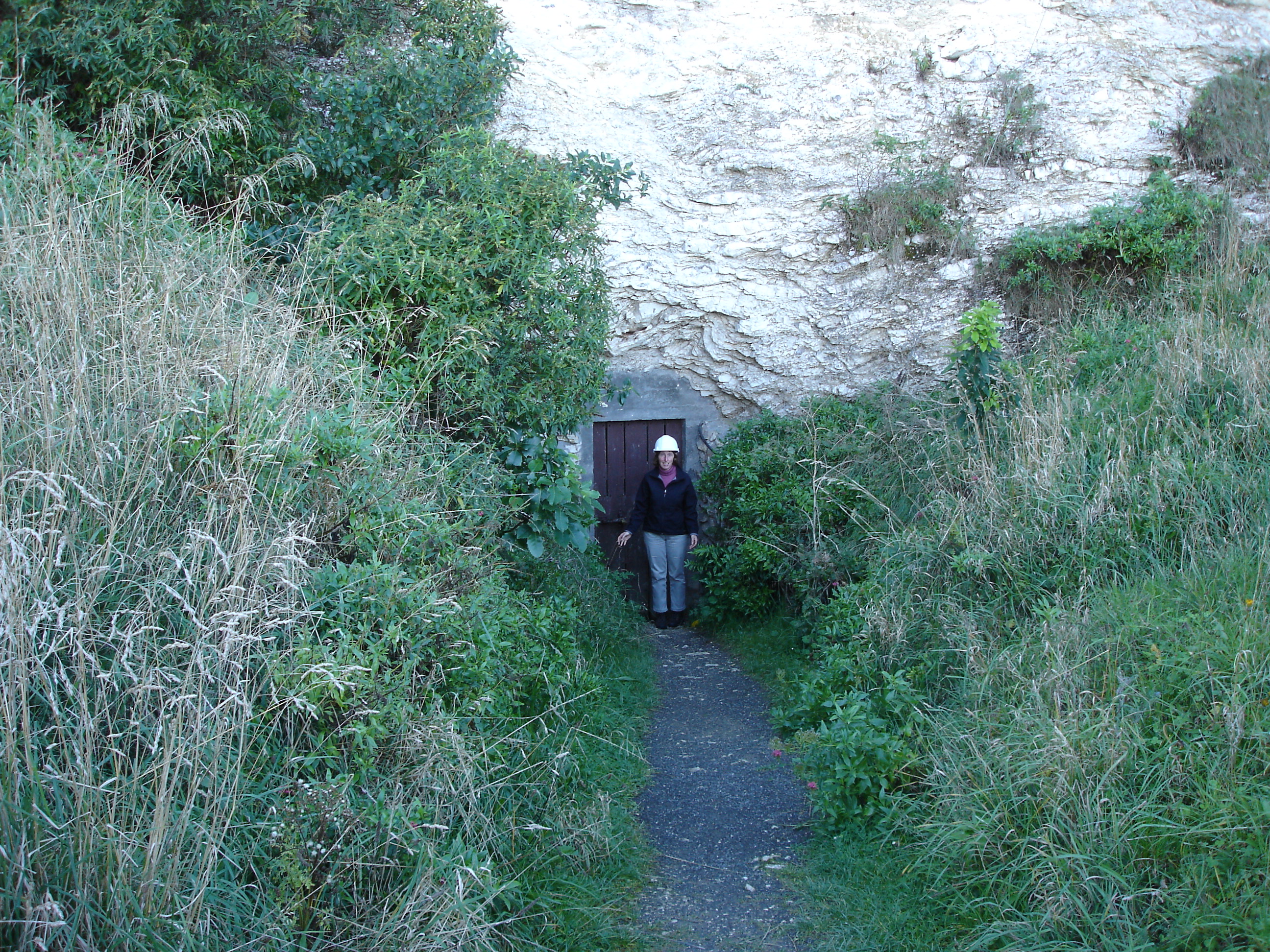 |
Rat caught in a trap - Maori Leap Cave |
Libby Chandler at the entrance to Maori Leap Cave |
It is adequate, but clearly somewhat less than modern technology could provide. Nonetheless, we are dealing with a privately-owned and operated cave, and one suspects that funds for capital works would be scant.
It was obvious that all concerned with the cave care for it greatly, and are very protective of it - which is excellent. The entrance gating worried me, I must admit.
It has a grated gate, allowing considerable air flow into the cave where none existed whilst the cave was closed for 6,000 years. Obviously, I had no data on decorations drying out, but certainly a sealed door would be a much better idea.
So, overall then? A great little cave! Yes, improvements can definitely be made both in cave infrastructure and interpretation, and hopefully they'll come over time. Given the obvious commitment of both the cave's operators and staff, and their enthusiasm, I am sure the cave future's is bright. Go see it if you are in the area!